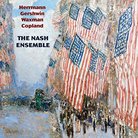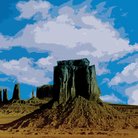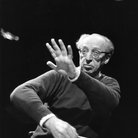Copland - Rodeo
Aaron Copland's Rodeo is music that will put a smile on your face, says Jane Jones.
This is music to put a smile on your face. Aaron Copland’s Four Dance Episodes from his ballet Rodeo always works for me - maybe its those ‘Yee has’ in the final Hoe Down, inspired by a Kentucky fiddler known as Bill Stepp whose original tune called 'Bonaparte’s Retreat' was inducted into the Grammy Hall of Fame this year because of it’s special significance in American music.
Composed in 1942, Rodeo is the second of Copland’s so called ‘cowboy ballets’; the first was Billy the Kid. Copland recognised there was what he called ‘a new public for music’ which had grown up around the popularity of public radio and recordings. The composer wanted to embrace this new audience by moving away from the atonal works he’d composed at the start of the 1930s, towards a simpler but more engaging style.
Even though this change of musical style was immediately successful, Copland wasn’t entirely convinced about writing a second cowboy ballet when the choreographer Agnes de Mille asked him. Eventually, she convinced him with her idea of a simple love story set against the backdrop of American ranch life – what she called ‘The Taming of the Shrew – with cowboys!’
So here’s how the story goes. The action centres around Burnt Ranch, where the cowgirl is happy to be just one of the guys, even though she fancies the Head Wrangler. He, like virtually all the other hands, only has eyes for the Rancher’s daughter. In a tale as old as ‘boy meets girl’ our cowgirl decides on a change of image, puts on a beautiful dress for the Hoe down, and finally gets her man.
The original ballet is distilled into four dance episodes. Once you know the story, the titles of the four scenes point the way. So the opening ‘Buckaroo Holiday’ is our introduction to ranch life, with the brass and percussion doing a nice job of turning into galloping horses, and plenty of American folk tunes adding to the picture of life down on the ranch. But it isn’t all fun out west, and with ‘Corral Nocturne’ the cowgirl’s sadness is reflected by the melancholy melody played by the wind section. Her sense of loneliness continues in Saturday Night Waltz when she is left on her own as everyone else pairs up. Eventually she dances with the ranch’s champion roper to another American tune ‘I Ride an Old Paint’ but it isn’t until the final ‘Hoe Down’ that our girl gets her man – and when she and the Head Wrangler kiss at the end of the ballet, love triumphs!
It’s a story as old as the hills, but everyone loves a happy ending – and that’s what I call feel good music!






